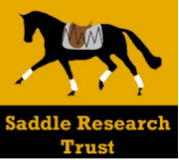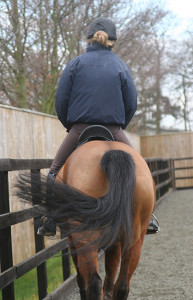New Technology Highlighted at 2nd Saddle Research Trust International Conference
The 2nd Saddle Research Trust International Conference, held at the end of last month at Anglia Ruskin University, was declared a resounding success. Presenting to a full house of around 400 delegates from varied quarters of the equestrian industry, the world’s leading veterinary and scientific experts examined, discussed and debated the latest research on saddle-related equine welfare and performance issues. Presenters, delegates and the conference sponsors World Horse Welfare, the British Equestrian Federation, Amerigo Saddles and Horse & Hound, commended the event as “excellent” and “a highly important step in the sharing of knowledge and expertise for the good of the horse.”
The conference saw leading vets, saddlers and equine therapists joining professional riders and trainers as well as leisure owners and riders to hear international experts share their vast experience and debate their cutting edge research.
SRT Director, Anne Bondi, began with an entertaining and thought provoking look at horse, rider and saddle interactions which highlighted some current and very relevant findings of health issues experienced by cyclists who spend hours in their saddles.
Dr Sue Dyson from the Animal Health Trust discussed the causes of saddle slip and the implications of hind limb lameness as well as equine back and rider asymmetry. She went on to present the findings from studies undertaken with her PhD student, Line Greve, investigating changing back dimensions in ridden sports horses after exercise. Evidence suggests that thick pads and numnahs can constrict and interfere with the fit of the saddle and can prevent the changes in back shape that should naturally occur in the horse during exercise. Such under-saddle materials should be seen as an integral part of the rider/saddle equation when calculating fit and considering comfort.
Professor Hilary Clayton gave a fascinating overview of the potential to use new technology in the riding arena to help improve rider position and technique. She explained the potential role of easy to use gadgets for basic kinematic analysis, sensors to buzz reminders at every crooked, out of balance move and an electronic belt to help improve core strength and control by detecting rider pelvic tilt on the horse.
A perceptive introduction to the afternoon sessions from British Equine Federation Director of Equine Sports Science and Medicine, John McEwen, was followed by a fascinating insight into the state-of-the-art in knowledge of animal movement science, given by Professor Christian Peham. He demonstrated how a biomechanical simulation method, based on real data, could assist vets as a clinical tool and delegates learned much more about the movement of the equine back and neck, through his 3D model.
Professor Lars Roepstorff and Maria Terese Engell explored the influence of the rider, emphasizing that the horse is a partner in sport and, as such, needs a rider who prepares himself or herself with thorough appropriate fitness and core strength exercise. Dr Katja Geser-von Peinen then presented the effects of saddle design and function on rider and horse. She shared her fascinating work of pressure mapping and reiterated how the expert interpretation of results is key to success with this technology.
The final session saw Professor Renee van Weeren summarize the evolution of the human-horse relationship, drawing comparisons with other sports and emphasizing that there is a huge amount of scope for more science to be used to improve standards on all levels. Olympic dressage rider, Richard Davison, ended by pinpointing which areas he specifically believed to have the most practical relevance for him as a rider as well as discussing the benefits of the research on a wider scale, urging equestrian organizations to take note.
Saddle Research Trust Trustee, Annie Pollock, summarized the take-home message from the conference, saying: “There are very real welfare and performance issues that can occur when the horse, saddle and rider interaction goes wrong. As horse owners, we need the practical skill of saddle fitters, the diagnostic ability of vets, the biomechanical knowledge of health practitioners, the expert eye of trainers and the highest standards in construction and design from saddle makers.”
Tony Tyler, Director of Operations at World Horse Welfare, continued: “The work the Saddle Research Trust is doing has the potential to produce considerable benefits to horse welfare and as such World Horse Welfare is keen to be involved in future projects and events.”
Delegate Claire Kincaid, a veterinary physiotherapist expressed the sentiment shown by so many who attended: “Thank you for a great conference, I really enjoyed the day and gained so much from your speakers who were so knowledgeable and amusing. Seeing the scientifically proven analysis of subjects with relation to saddles and the horses back, has given me the confidence to relate my new found knowledge to my clients.”
Lucinda Green MBE concluded: “Well done, magnificent day and beautifully organized.”
The full proceedings from the Saddle Research Trust Conference can be downloaded at www.saddleresearchtrust.com, email research@saddleresearchtrust.com or telephone 07775 912202.












